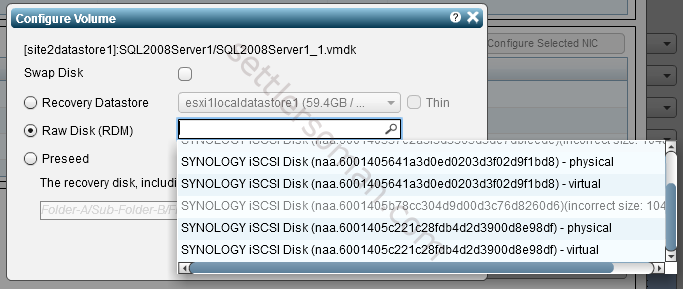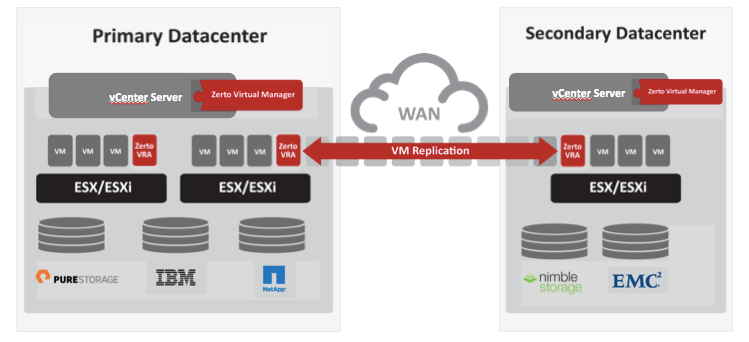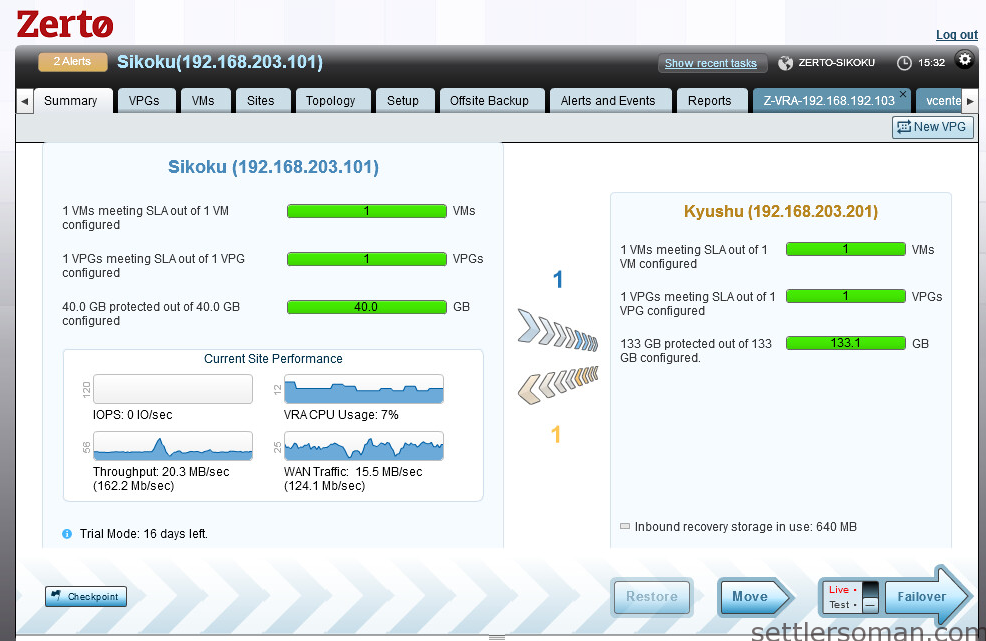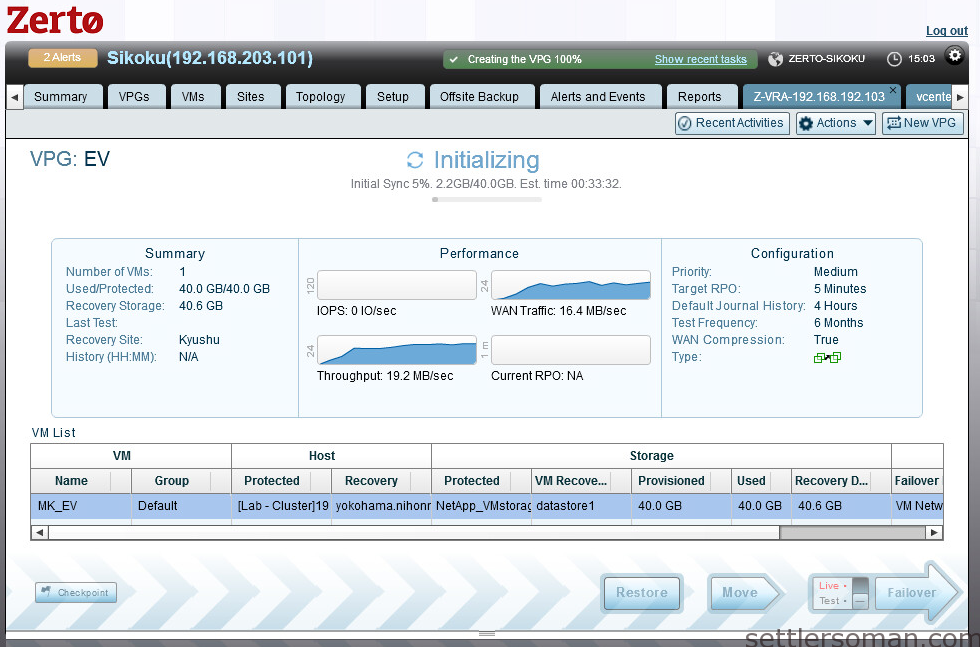Zerto Virtual Replication provides a business continuity (BC) and disaster recovery (DR) solution in a virtual environment. This is a competitor of VMware Site Recovery Manager and EMC Recover Point for Virtual Machines.
Some main features:
- Recovery Point Objective (RPO) – seconds. (async replication available)
- Zerto Virtual Replication is storage-agnostic. Any storage supported by VMware (including FC, FCoE, iSCSI, NAS, and DAS) is supported by Zerto.
- Orchestration of DR workflows, including test, failover and failback of a single VM or VMs group
- Zerto can replicate source RDMs (Raw Device Mappings) to target VMDKs and source
VMDKs to target RDMs.
- WAN bandwidth consumption optimization
- Zerto does not uses snapshots
Zerto Virtual Replication comprises the following components:
 Zerto Virtual Manager (ZVM) – A Windows service, which manages everything required for the replication between the protection and recovery sites, except for the actual replication of data.
Zerto Virtual Manager (ZVM) – A Windows service, which manages everything required for the replication between the protection and recovery sites, except for the actual replication of data.
Virtual Replication Appliance (VRA) – A virtual machine installed on each ESX/ESXi hosting virtual machines to be protected or recovered, to manage the replication of data from protected virtual machines to the recovery site.
Zerto vSphere Client console plug-in – A plug-in in the vSphere Client console that enables managing recovery using Zerto Virtual Replication from the console.
Zerto GUI – Recovery using Zerto Virtual Replication is managed via a user interface, Zerto DR Management UI, vSphere Client console or vSphere Web Client.
 Two paires sites (Sikoku and Kyushu)
Two paires sites (Sikoku and Kyushu)
Update: Zerto 4.0 introduced some cool features and totally new UI based on HTML 5!
